Results
-
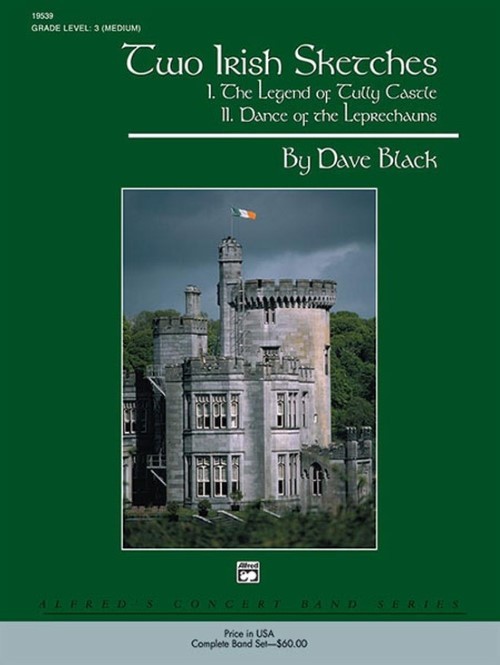 £79.50
£79.50Two Irish Sketches (Concert Band - Score and Parts) - Black, Dave
Two Irish Sketches is a beautiful, original work inspired by Irish legend and folklore. Soaring crescendos and soothing harmonies fill the first movement, entitled "The Legend of Tully Castle." "Dance of the Leprechauns" is a lively jig in 6/8 time, featuring clever syncopation and subtle counterpoint. Dave Black's Two Irish Sketches will be a wonderful addition to your next concert! Duration: 4.15
Estimated dispatch 7-14 working days
-
 £42.50
£42.50Appalachian Suite
This miniature suite of Appalachian favorites includes Black Is the Color of My True Love's Hair, Sourwood Mountain and Simple Gifts. Even at this easy level, Paul Murtha has skillfully combined a mixture of musical styles in an arrangement that is well-paced and attainable by beginning bands. (2:30)
Estimated dispatch 7-14 working days
-
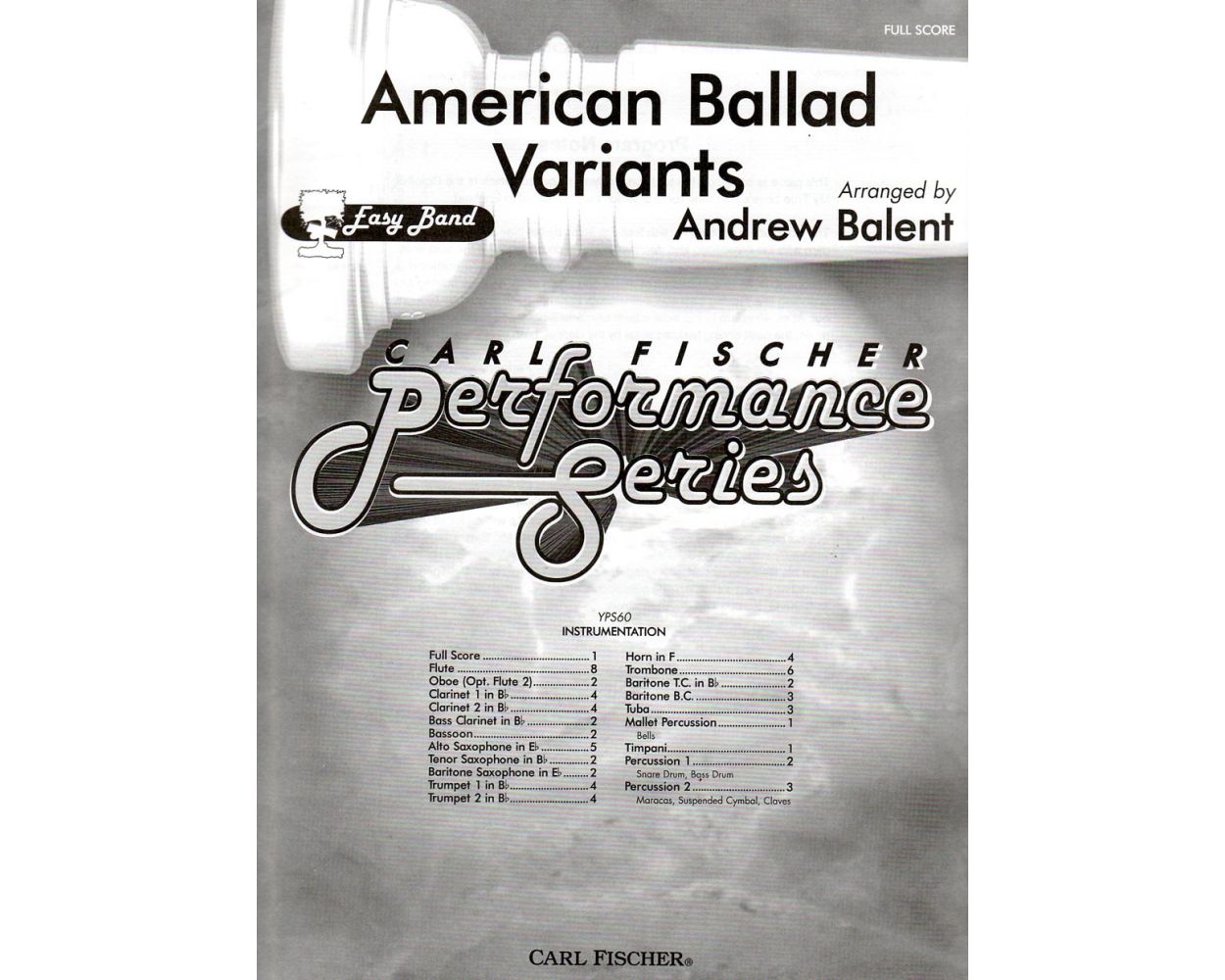 £49.00
£49.00American Ballad Variants - Traditional
A fresh and spirited treatment of the traditional American ballad Black Is the Color of My True Love's Hair, this fine piece for a developing band starts with a slow and atmospheric introduction featuring solos by flute and trumpet that hint at the tune. The main section sets the ballad to a driving Latin beat, but the slow reflective mood returns at the end with solos for clarinet, bass clarinet and flute.
Estimated dispatch 12-14 working days
-
£72.95
American Ballad Variants
A fresh and spirited treatment of the traditional American ballad Black Is the Color of My True Love's Hair, this fine piece for a developing band starts with a slow and atmospheric introduction featuring solos by flute and trumpet that hint at the tune. The main section sets the ballad to a driving Latin beat, but the slow reflective mood returns at the end with solos for clarinet, bass clarinet and flute.
Estimated dispatch 7-14 working days
-
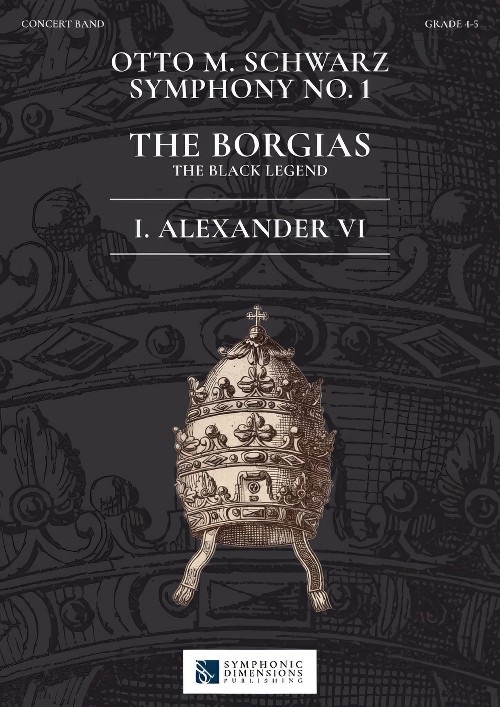 £148.99
£148.99Alexander VI (Movement I from Symphony No.1, The Borgias) (Concert Band - Score and Parts) - Schwarz, Otto M.
The Borgia family is the subject of a so-called black legend, a pejorative term that has been used since the Middle Ages to refer to Spain and Spaniards. The Borgias' black legend is one of corruption, abuse of power, orgies, sex and murder. These rumours spread especially during the reign of Pope Alexander VI, a member of the family. Alexander was even referred to as the Antichrist. According to eyewitnesses, when he died Satan prowled the death chamber and a black dog, an envoy of the Devil, ran up and down the aisles of the Vatican. The brutal rule of Pope Alexander and his family led to a kind of demonization of the Borgia family. But it is precisely the lack of scruples, the brewing of poisons, the incest and various cruelties that continue to hold a certain fascination for us.Alexander VI: Rodrigo Borgia was born in 1431 near Valencia. He studied law in Bologna and, through his uncle Pope Calixtus III, he rose through the church hierarchy. As vice-chancellor of the Holy Roman Catholic church, he became one of the richest men in Europe. As a cardinal he fathered four children who he later legitimised when he became pope. His election to the papacy was funded by the sale of offices, extortion and bribes of all kinds. Through an alliance with Ascanio Sforza he was elected pope on August 11 1492 and named himself from then on Alexander VI, an allusion to Alexander the Great.Duration: 9.30
Estimated dispatch 7-14 working days
-
 £117.80
£117.80Freedom Defended - Rossano Galante
Inspired by the non-violent civil rights protest of February 1, 1960 against a segregated lunch counter in Greensboro, NC, Freedom Defended strives to encapsulate the story of this now historic event. Commissioned by the band directors of the North Carolina Central District and East Central District Bandmasters Associations, this four movement piece honors each of the North Carolina Agricultural and Technical State University students known as the "Greensboro Four", Joseph McNeil, Franklin McCain, Ezell Blair Jr., and David Richmond. Their actions directly led to the Civil Rights Act of 1964 which mandated desegregation in public spaces. Movement 1 (Da Sogno) - The opening thematic material is dream-like and idyllic as the "Greensboro Four" enter the Woolworth Store at 132 South Elm Street and peacefully sit at the lunch counter and order coffee. Movement 2 (Con Fuoco) - The piece takes a dark turn when they are refused service and are told "We don't serve Negros here". The music is somewhat dissonant and rhythmic but a heroic theme captures the tenacity and courage of these brave young men. Movement 3 (Molto Cantabile) - A plaintiff theme portrays the hopelessness the four freshmen faced as they continued to be refused service until they leave when the store closed that night. Movement 4 (Con Spirito) - Undeterred, the "Greensboro Four" returned the next day, this time joined by more than twenty other black students. While they were again refused service, the sitins began to attract media attention and each day more and more students, both black and white, joined the cause. By February 4th, over 300 students staged sit-ins not only at the Woolworth Store but also the lunch counter at Greensboro's S. H. Kress & Co. The music is rejoicing and uplifting, similar to the opening statement, but now fully orchestrated and more fully developed. Coda - a quiet theme based on the motives from the opening thematic material brings the work to a reflective close as we remember these four men who, in the face of adversity, stood up for equality for all men and women.
Estimated dispatch 7-14 working days
-
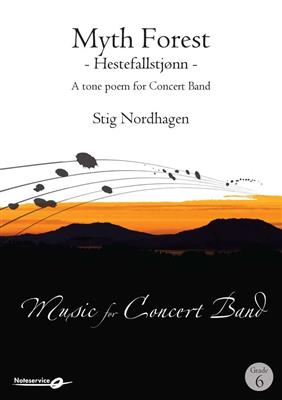 £435.40
£435.40Myth Forest - Hestefallstjnn - A tone poem - Stig Nordhagen
In the forest, not far from my house is Hestefallstjnn. Hestefallstjnn is a pond, and this music describes the atmosphere and feeling you get when standing close to it.Measure 1Sunburst: The sun rises and rays of light shatter the morning mist.Measure 36Bugs and Birds: Insects small and large come to life, birds are seeking the water.Measure 65Black water abyss: The black and abysmal water holds many secretsMeasure 200Water lilies: Water lilies are rising from the murky water, stretching for the light.Measure 231Echo from the other side (dvergml)The echo does not always send back the answer you want.Measure 296The creatures of the forest are dancing into the night- Stig Nordhagen 2021 -
Estimated dispatch 7-14 working days
-
 £72.99
£72.99Lyric for Band - George Walker
In 1946, George Walker was still doing graduate work at the Curtis institute when he composed Lyric for Strings, which would prove over the coming decades to become one of the most performed and enduring string orchestra works of the 20th Century. This first-ever edition for symphonic wind band was arranged by Dr. Luci Disano and premiered by The President's Own United States Marine Band on August 24, 2022. George Walker (June 27, 1922 - August 23, 2018) began his groundbreaking career as a young piano virtuoso and was admitted to Oberlin College on a scholarship following his first public recital at the age of 14. Graduating with the highest honors in his Conservatory class, he was admitted to the Curtis Institute of Music, becoming the first black graduate of this renowned music school. His works demonstrate a wide range of artistic excellence in genres ranging from instrumental and vocal solos and chamber music to compositions for orchestra and other large ensembles. He is the first black composer to be awarded the Pulitzer Prize.
Estimated dispatch 7-14 working days
-
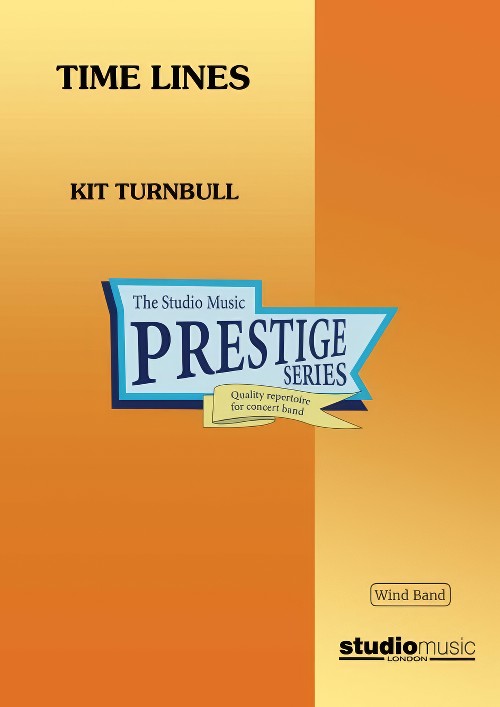 £32.95
£32.95Time Lines (Concert Band - Score only) - Turnbull, Kit
The time line is a western musicological device that allows us to define many of the rhythms used in sub-Saharan music. It is essentially a 12-beat pattern that can be subdivided as 6x2, 2x6, 4x3, or 3x4, which generates many of the polyrhythms that are common in African music. Time Lines is a single continuous work made up of four contrasting sections which are based on various aspects of African dance and choral music. The slow introduction introduces many of the rhythms that the piece is based on and is followed by a fast section which quotes a South African hymn. Abasundu Nabamhlope (the first line of which translates as 'Black and whites, let them give thanks together'. The chorale section which follows makes use of phrases from the hymn Nkosi Sikelel' iAfrika (Lord Bless Africa) which was written in 1897 and has since been adopted as the national anthem of several countries in southern Africa. The final allegro section sees the drawing together of the various dance and choral elements used in the piece with the percussion section playing rhythmic patterns generated by the time line.Duration: 13:30Recorded on QPRM151D TIME LINES: Great British Music for Wind Band Vol.12 (Royal Northern College of Music)
Estimated dispatch 7-14 working days
-
 £164.95
£164.95Time Lines (Concert Band - Score and Parts) - Turnbull, Kit
The time line is a western musicological device that allows us to define many of the rhythms used in sub-Saharan music. It is essentially a 12-beat pattern that can be subdivided as 6x2, 2x6, 4x3, or 3x4, which generates many of the polyrhythms that are common in African music. Time Lines is a single continuous work made up of four contrasting sections which are based on various aspects of African dance and choral music. The slow introduction introduces many of the rhythms that the piece is based on and is followed by a fast section which quotes a South African hymn. Abasundu Nabamhlope (the first line of which translates as 'Black and whites, let them give thanks together'. The chorale section which follows makes use of phrases from the hymn Nkosi Sikelel' iAfrika (Lord Bless Africa) which was written in 1897 and has since been adopted as the national anthem of several countries in southern Africa. The final allegro section sees the drawing together of the various dance and choral elements used in the piece with the percussion section playing rhythmic patterns generated by the time line.Duration: 13:30Recorded on QPRM151D TIME LINES: Great British Music for Wind Band Vol.12 (Royal Northern College of Music)
Estimated dispatch 7-14 working days
